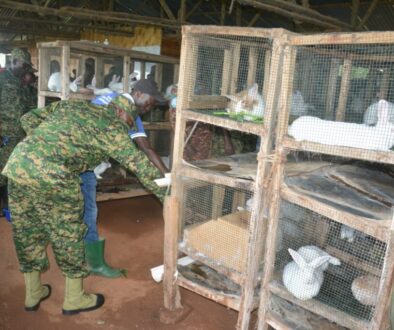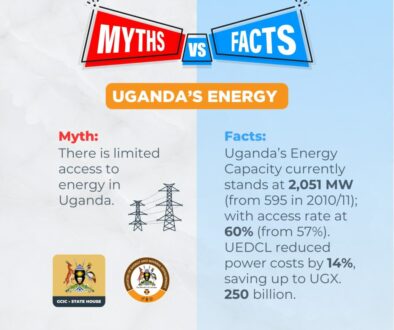National Park oil affected areas restoration starts

CAPTION: TotalEnergies Managers with other stakeholders plant a tree at Kigezi Primary School playground, Kabale District to commemorate the World Environment Day 2025.
By Our reporter
MURCHISON – TotalEnergies has begun restoring parts of the Murchison Falls National Park where oil is being drilled under the Tilenga project.
Part of the oil development activities are being undertaken in ecologically sensitive areas in the Murchison Falls National Park in Nwoya.
David Ocanda, the Biodiversity manager at TotalEnergies said on Thursday the initiative has so far seen the successful restoration of 217 hectares of land coverage were exploration and infrastructural activities in the National Park have taken place.
Ocanda noted that the restored areas include well pads used during the oil exploration phase, access roads opened for transportation, borrow pits and flow line routes laid in the ongoing infrastructural development phase.
The restoration efforts are part the biodiversity commitments the company made in the Environmental and Social Impact Assessment Process (ESIA) approved by National Environment Management Authority (NEMA)
The restoration is also part of the broader biodiversity management plan by TotalEnergies. It involves the restoration natural vegetation to encourage the return of wildlife in zones where oil activities have taken place.
Ocanda said through periodic monitoring, the biodiversity department has been able to witness the natural rejuvenation of grasses and tree species, and return of wildlife in some of the areas where flow lines were laid and decommissioned well pad sites.
Under the restoration initiative according to Ocanda, ecological data surveys were first conducted for the original composition of crop, trees and wildlife species before oil exploration and infrastructural development activities were conducted. The surveys also included detailed data of the ecosystem and mapping of all sensitive areas for vegetation and wildlife.
He explained that once facilities for the well pads are decommissioned and the oil pipelines are laid underground, all foreign materials are removed from the site and only the top soil from vegetated bund walls are returned for the natural growth of vegetation.
Murchison Falls National Park, the country’s largest protected area is home to several species of flora and fauna with the notable being lions, giraffe, elephants, leopards and several species of birds.
While the oil development covers only 0.03 percent of the surface area of the park designed to restrict the Tilenga footprint in the park to only the establishment of only eight well pads, the activities have over the years stirred conservation concerns.
Locals and local leaders bordering in the Murchison falls National Park in Nwoya district have often accused the oil development in the park for persistently driving away herds of elephants into community settlements resulting in large scale crop destruction, injuries and deaths.
However, according to officials from the Oil giant, the elephant’s invasion of community homelands according to their research has no link with the oil activities but rather the search for food crops and a routine migratory pattern.
A biodiversity program report by TotalEnergies released last year shows that monitoring of elephants started in 2012 but results according to TotalEnergies, oil and gas had minimal effect on their movement behaviors.
Ocanda insisted that data from the GPS tracker fitted on 15 elephants showed the elephants maintained the same migratory routes, an indicator that the oil drilling rig and infrastructural development activities didn’t alter their patterns.
“Elephants move anywhere in the world provided there are no barriers, they even sometimes break fences. We also know elephants are attracted to palatable crops outside the parks,” He said.
To mitigate noise and vibration from large machinery, especially the oil rig being used, the Oil giant said they designed a silent rig to limit vibration that could distract and stress the wildlife.
Alex Makambura Atukukwase, the Petroleum Authority of Uganda (PAU) monitor said the silent oil rig has enabled a safe environment for the wildlife since it doesn’t emit barely unnoticeable sound.
At Jobiri 09 where the drilling of the fifth well pad is being finalized, Atukukwase said wild animals around appeared not upset and often come around the well pad.
“One of the main things we uphold is safety, safety of the people, safety of the environment and above all since we are here, safety of the animal to make sure that we work together with animals… Sometimes they come close to the fence meaning they are in good relationship with the operation” said Atukuwase.
With concerns mounting from locals living near the Murchison Falls National Park over stray elephants, TotalEnergies through partnership with Uganda Wildlife Authority recently announced support towards the installation of electric fences to restrict elephant movements. The initiative according to officials will start in the Southern part of the park and later its northern area that covers areas of Nwoya district.


